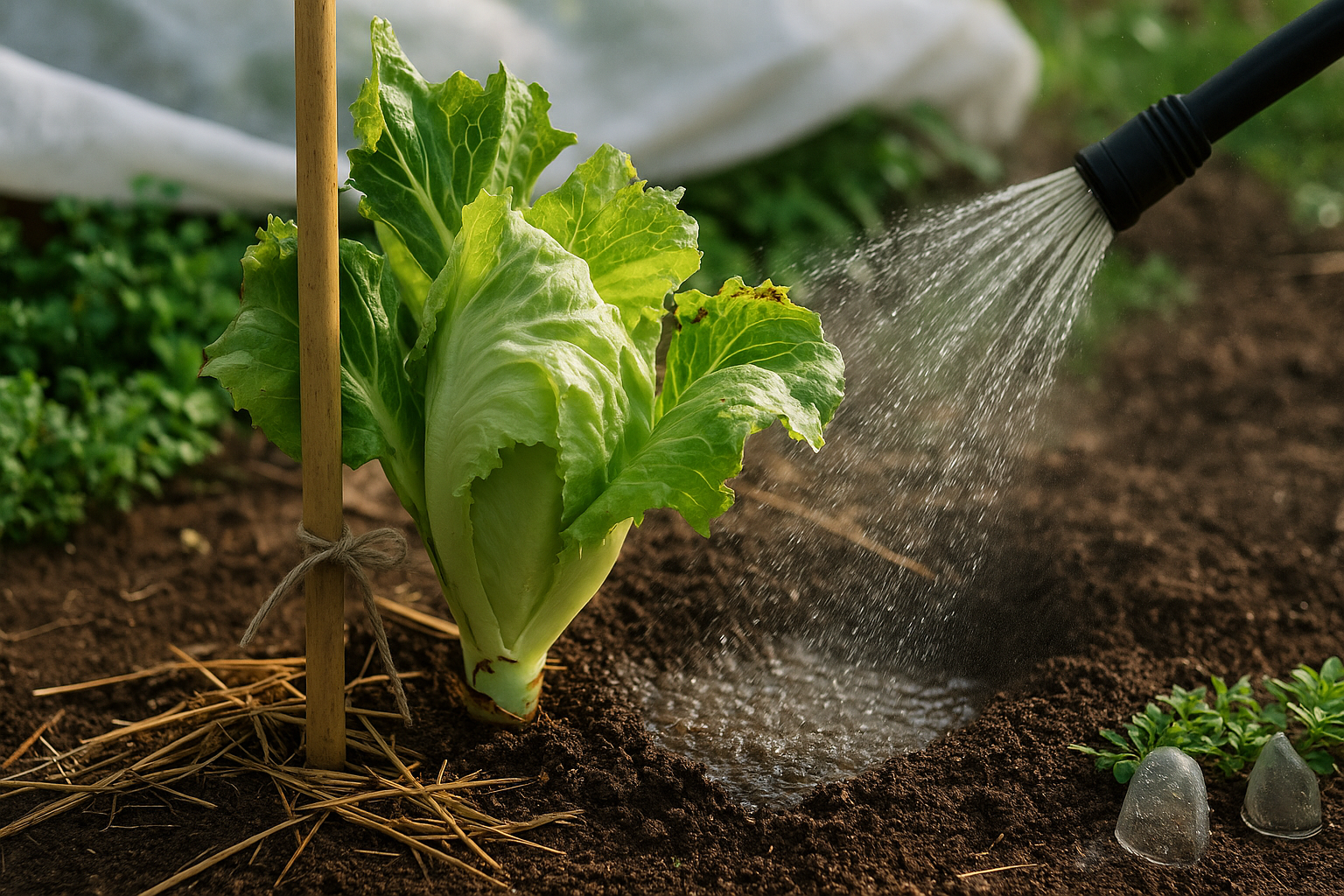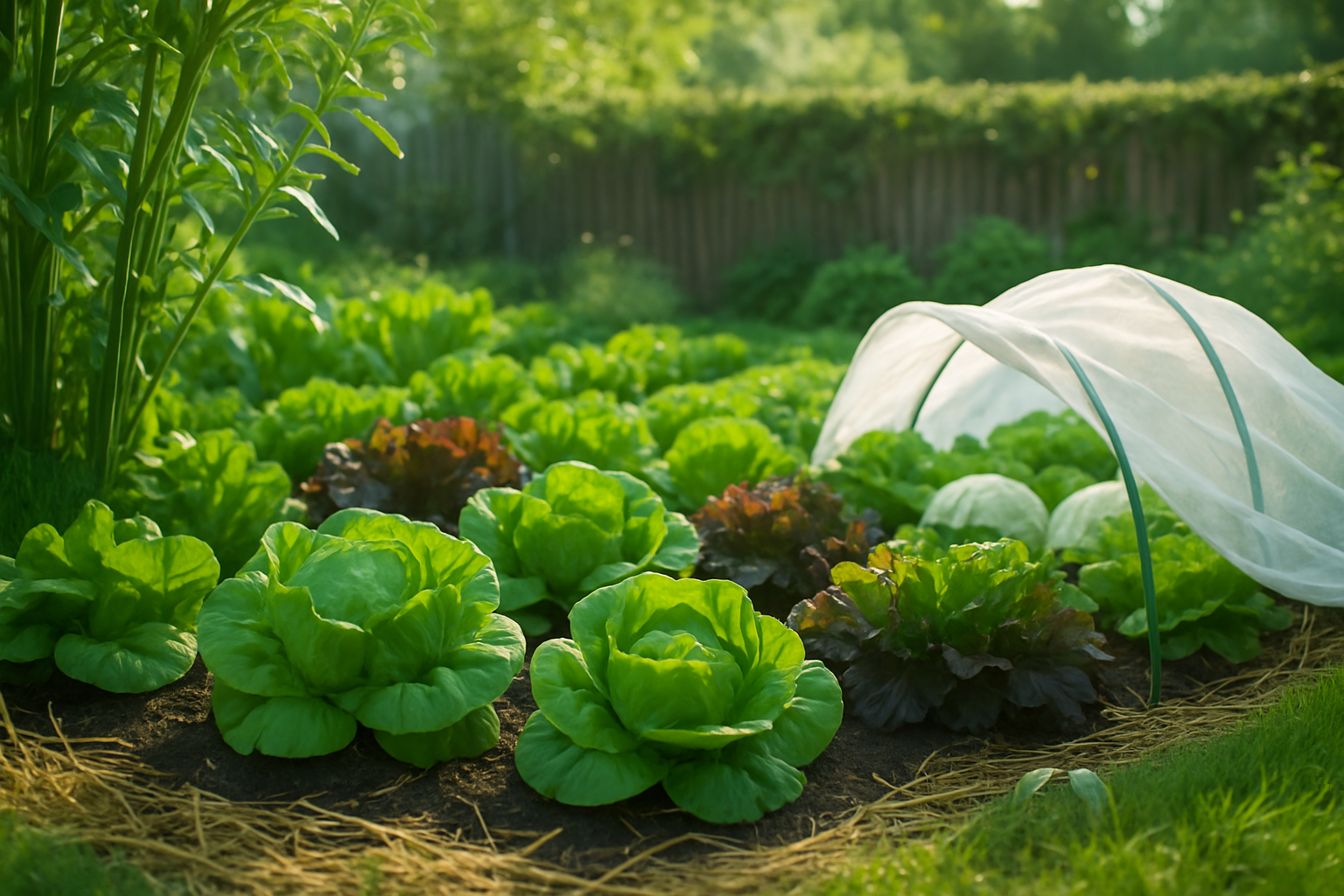Understanding Lettuce and Its Growth Needs
Lettuce thrives as a cool-season crop, preferring mild weather during spring or fall rather than the intense heat of summer. Its delicate, tender leaves are easily damaged by harsh environmental factors—especially wind, which can tear or dry out the foliage.
Lettuce grows best in temperatures between 60–70°F (15–21°C) and requires consistently moist, well-drained soil to stay hydrated. When planting lettuce, keep in mind that it’s particularly sensitive to sudden droughts or dry spells; leafy greens like this wilt quickly if their roots don’t get enough water.
Windy conditions present a unique challenge—not only can strong gusts physically damage the fragile leaves, but they also speed up evaporation, drawing moisture away from both the leaves and the soil. This increased water loss stresses the plants, forcing them to work harder just to stay hydrated and healthy.
As a result, lettuce grown in exposed, windy areas can become stunted and may struggle to form full heads. To protect your crop, try using row covers or grow lettuce alongside windbreaks such as taller vegetables, fencing, or even a row of shrubs. Providing shelter helps maintain steady moisture and gives your lettuce the gentle conditions it needs to thrive.
Choosing the Right Lettuce Varieties for Windy Areas

When gardening in windy areas, selecting the right lettuce varieties makes all the difference in achieving a successful harvest. Some lettuces, like Romaine and Butterhead, are naturally more resilient against strong winds.
Romaine, with its upright and sturdy leaves, tends to withstand gusts better than loose-leaf types, while Butterhead forms compact heads that are less prone to tearing.
It’s also a smart idea to explore locally adapted and heritage varieties—these lettuces have been grown for generations in your region and often develop greater toughness and adaptability to local conditions.
When choosing seeds, look for varieties labeled as wind-tolerant or those that highlight robust structure and disease resistance. Reading reviews or asking local gardeners which types thrive in your area can save you headaches down the road.
Additionally, opt for seed packets that note resistance to common lettuce problems like downy mildew and leaf rot, since sturdy plants are less likely to succumb to stress caused by harsh weather.
By prioritizing resilience and strength at the seed-buying stage, you set your lettuce patch up for a healthier, more windproof season.
Preparing Your Planting Site in Windy Conditions

When planting in windy conditions, choosing the right location is your first line of defense. Look for spots shielded by existing structures like fences, buildings, or tall hedges. These barriers help break up the intensity of gusts, creating calmer microclimates ideal for new plantings. For example, positioning a garden bed just downwind of a shed or garage can offer meaningful protection.
Once you’ve picked a sheltered spot, focus on soil preparation to help your plants anchor firmly. Loosen the soil to a depth of 10 to 12 inches and mix in organic matter—compost or well-rotted manure works well—to promote healthy, extensive root growth. This not only gives plants a stronger grip against wind but also improves overall soil health.
Windy sites tend to dry out quickly, so moisture management is key. Add a layer of mulch, like shredded bark or straw, around your plants to conserve soil moisture and shield roots from drying out. At the same time, ensure your soil drains freely, especially after rain, by incorporating coarse sand or grit if your site tends to become waterlogged. Overly wet roots can be just as damaging as dry ones, particularly in exposed areas.
By combining strategic location selection with thoughtful soil preparation and smart water management, you’ll give your garden the resilience it needs to thrive even when the wind picks up.
Planting and Early Care – Giving Lettuce the Best Start
When planting lettuce, you have two main choices: direct sowing seeds into the garden or transplanting indoor-grown seedlings. Direct sowing is often simpler—just scatter seeds over prepared soil and gently press them in. However, tiny lettuce sprouts are vulnerable to being uprooted or dried out by wind. To protect them, lay floating row covers over the bed until the seedlings are well established.
Transplanting gives you a head start, but those baby plants need special care because they aren’t used to harsh outdoor breezes. For either method, make sure each lettuce seed or plant has enough space—6 to 8 inches apart for most varieties—so roots have room to grip the soil and plants can grow strong.
Plant seeds about 1/4 inch deep and set transplants just deep enough to cover the roots, not the leaves, to prevent wind from catching loose plants. If you start your seedlings indoors, harden them off by gradually exposing them to outdoor conditions over a week: place them outside for a few hours each day, beginning in a sheltered spot, then slowly increase their time and direct wind exposure. This gentle acclimation toughens them up, reducing transplant shock and helping your lettuce get the best possible start.
Simple Ways to Shield Lettuce from Wind Damage

Shielding your lettuce from wind damage doesn’t have to be complicated or expensive—simple barriers and smart techniques can make all the difference. One practical method is installing windbreaks like garden fabric or floating row covers. Secure the fabric with stakes or garden hoops to keep it taut and allow air to flow underneath without smothering the plants.
Temporary fencing, such as mesh panels or sections of chicken wire, works well when positioned to block the prevailing wind but should be set a few feet away from your lettuce to avoid shading and restricting airflow.
For a quick DIY solution, try homemade shields: upturned clear storage bins or clever arrangements of plastic bottles cut in half can act as mini cloches. Just remember to remove lids or cut ventilation slits to prevent heat buildup and fungal risks.
Mulching around the base of lettuce with straw or leaf mold is a great way to conserve soil moisture and anchor the soil against wind erosion, while also reducing splashing that could spread disease. Taller seedlings especially benefit from gentle staking—simply plant a small stick or bamboo skewer near the base and tie the lettuce loosely with soft twine for support on blustery days.
Maintenance is key: check barriers after storms for any tears or dislodged stakes, and wash translucent covers every few weeks to maximize light.
Most importantly, always allow for adequate airflow; windbreaks should never fully enclose your plants, as stale, humid air fosters mildew and rot. If you spot condensation or yellowing leaves, adjust your shields or raise covers during calm periods.
With a careful setup and occasional checks, you’ll protect your lettuce from stormy setbacks while keeping them healthy and thriving all season.
Ongoing Care and Troubleshooting Wind-Related Issues

Recognizing wind stress early can save your plants from lasting damage. Look for signs such as ragged, torn leaves, wilting, or broken stems—these often indicate your plants are struggling with wind exposure.
When you notice these symptoms, try staking or shielding delicate plants with windbreaks like garden fabric or temporary barriers made from old cardboard.
On especially windy days, your soil can dry out much faster than usual, making regular watering crucial. Aim to water deeply in the morning so roots receive moisture before the wind picks up and evaporates it. Mulching around plants helps lock in soil moisture and prevent roots from drying out.
Wind doesn’t just dry out plants—it can also blow in pests such as aphids or strip away topsoil, causing erosion. If you spot a sudden influx of pest damage, rinse plants with water and use insecticidal soap if needed. For soil erosion, replace lost soil and add extra mulch or plant groundcover to hold everything in place.
Keeping an eye out for these common wind-related challenges and responding quickly will help your garden stay healthy and resilient, even on blustery days.
